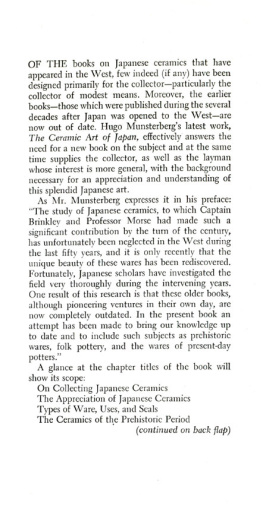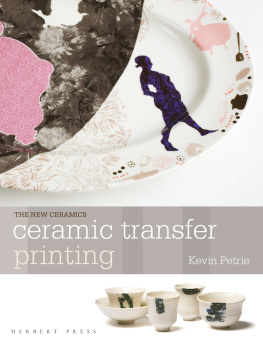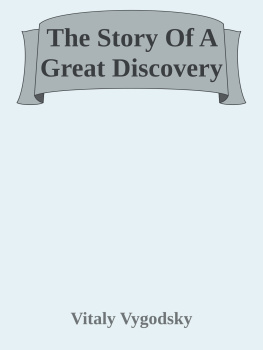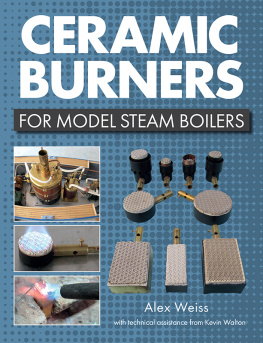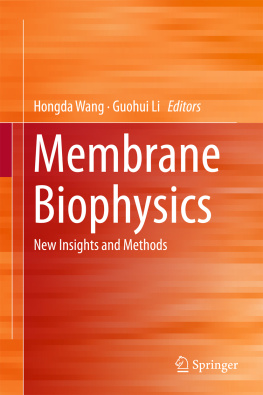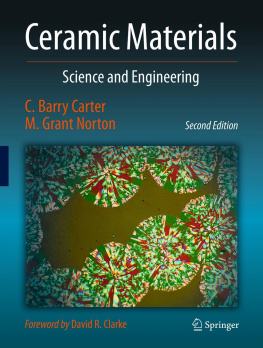Gitis Vitaly - Ceramic Membranes
Here you can read online Gitis Vitaly - Ceramic Membranes full text of the book (entire story) in english for free. Download pdf and epub, get meaning, cover and reviews about this ebook. year: 2016, publisher: John Wiley & Sons, Incorporated, genre: Children. Description of the work, (preface) as well as reviews are available. Best literature library LitArk.com created for fans of good reading and offers a wide selection of genres:
Romance novel
Science fiction
Adventure
Detective
Science
History
Home and family
Prose
Art
Politics
Computer
Non-fiction
Religion
Business
Children
Humor
Choose a favorite category and find really read worthwhile books. Enjoy immersion in the world of imagination, feel the emotions of the characters or learn something new for yourself, make an fascinating discovery.

- Book:Ceramic Membranes
- Author:
- Publisher:John Wiley & Sons, Incorporated
- Genre:
- Year:2016
- Rating:4 / 5
- Favourites:Add to favourites
- Your mark:
- 80
- 1
- 2
- 3
- 4
- 5
Ceramic Membranes: summary, description and annotation
We offer to read an annotation, description, summary or preface (depends on what the author of the book "Ceramic Membranes" wrote himself). If you haven't found the necessary information about the book — write in the comments, we will try to find it.
Ceramic Membranes — read online for free the complete book (whole text) full work
Below is the text of the book, divided by pages. System saving the place of the last page read, allows you to conveniently read the book "Ceramic Membranes" online for free, without having to search again every time where you left off. Put a bookmark, and you can go to the page where you finished reading at any time.
Font size:
Interval:
Bookmark:
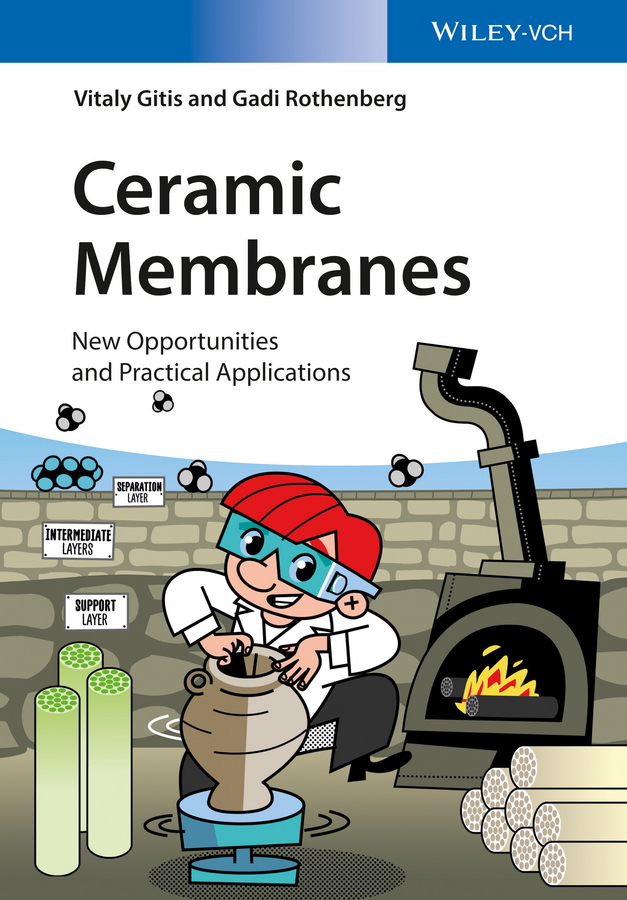
Rothenberg, G.
Catalysis
Concepts and Green Applications
2008
Print ISBN: 978-3-527-31824-7
All books published by Wiley-VCH are carefully produced. Nevertheless, authors, editors, and publisher do not warrant the information contained in these books, including this book, to be free of errors. Readers are advised to keep in mind that statements, data, illustrations, procedural details or other items may inadvertently be inaccurate.
Library of Congress Card No.: applied for
British Library Cataloguing-in-Publication Data
A catalogue record for this book is available from the British Library.
Bibliographic information published by the Deutsche Nationalbibliothek
The Deutsche Nationalbibliothek lists this publication in the Deutsche Nationalbibliografie; detailed bibliographic data are available on the Internet at .
2016 Wiley-VCH Verlag GmbH & Co. KGaA,
Boschstr. 12, 69469 Weinheim, Germany
All rights reserved (including those of translation into other languages). No part of this book may be reproduced in any form by photoprinting, microfilm, or any other means nor transmitted or translated into a machine language without written permission from the publishers. Registered names, trademarks, etc. used in this book, even when not specifically marked as such, are not to be considered unprotected by law.
Print ISBN: 978-3-527-33493-3
ePDF ISBN: 978-3-527-69657-4
ePub ISBN: 978-3-527-69658-1
Mobi ISBN: 978-3-527-69656-7
oBook ISBN: 978-3-527-69655-0
To our wives, Diana and Live, and our children,
Abigail, Ariel, Avital, Daniel and Emil,
who wondered what we did all this time.
This textbook tells the story of ceramic membranes. Ceramics are making a comeback as hi-tech materials, and the membranes are used in many processes, from uranium purification to orange juice finishing. Moreover, they can help us address urgent environmental issues air pollution and shortage of clean drinking water. It is definitely the time to study them.
The book is divided into five thematic chapters. looks at ceramic membranes from a different viewpoint: We examine the economics of membrane manufacturing and predict, on the basis of case studies, the future market for ceramic membrane technologies.
We wrote this book for both researchers and students. Thus, each chapter includes detailed references, as well as exercises. To help you master the membrane jargon, key terms are printed in italics and defined the first time they appear in the text. The book contains over 1000 references, whereof >90% are original papers in peer-reviewed journals. We cite reviews when introducing a subject, and articles when discussing specific topics (plus some patents in the industrial examples). also contains a Further Reading list of books on related specialized subjects.
We thank our families for their patience and support during the past 3 years, and our colleagues Vittorio Boffa, Hessel Castricum, David Dubbeldam, Andre ten Elshof, Giovanni Catania, David Farrusseng, Slava Freger, Freek Kapteijn, Chiho Kojima, Erik Kossin, Daniel Sereth Larsen, Marc Pera-Titus, Ehsan Salehi, Jesus Santamara, Lev Tsapovski, Ning Yan and Gennady Ziskind for their help and advice. V.G. thanks Rabbi Daniel Lewenstein for his support and encouragement. We also thank Itamar Daube for drawing the cover picture and Wiley-VCH editors Waltraud Wst and Gudrun Walter for their encouraging and professional attitude.
| January 2016 | |
| Vitaly Gitis | Beer-Sheva, Israel |
| Gadi Rothenberg | Amsterdam, The Netherlands |
The Basics
This chapter covers the basic definitions, main features and engineering and design of ceramic membranes. We give a brief history of the development of ceramic membranes, define key terms in membrane science, outline the popular separation processes (ultrafiltration (UF), nanofiltration (NF), pervaporation and gas separation) and explain the main module designs (plate-and-frame, spiral-wound, tubular, honeycomb and hollow fibres). The historical overview shows how membranes started, when the big breakthrough occurred, where membranes are now and how the near future will look like. The actual making of ceramic membranes is in itself an interesting story, and a good part of the chapter is devoted to the synthesis of various layers of the membrane. We give an overview of the main methods and materials used for preparing such membranes and characterizing them, as well as their key advantages and limitations. The discussion covers both isotropic and anisotropic membranes, prepared from a range of materials (zirconia, titania, alumina, hafnia, tin oxide, mixed oxides, zeolite membranes, silica, hybrid organicceramic membranes and metallo-organic frameworks). We analyse in detail the formation of support layer and list some rules of thumb collected by many researchers in numerous trials. A key aspect here is the gradual transition from the support layer through the intermediate layers and ultimately to the top layer. The development of top layer is reviewed through the basics of chemical vapour deposition (CVD), solgel technology and zeolite modifications. The chapter concludes with a list of books for further reading, qualitative and quantitative exercises and references.
A membrane is a semipermeable active or passive barrier that permits the passage of one or more components in the initial mix and limits the passage of others. Although Graham in 1848 used a sort of membrane in the development of diffusion law, and although the first membranes were synthesized more than a century ago, the development and implementation of membranes really turned into a scientific discipline in the second half of the twentieth century. Today's membranes, with their modest energy demands and small footprint, have become even more attractive and are often compared favourably with conventional separation processes such as distillation, adsorption, absorption, extraction and crystallization. There are many books on the development, characterization and implementation of polymer membranes. Ceramic membranes are much less in the focus, and this book will hopefully rectify this a little, by shedding light on this important subfield of membrane science.
By the layman's definition, ceramics are materials made of pottery (o in Greek) that is then hardened by heat. A more scientific definition (from the Ceramic Tile Institute of America) describes ceramic material as an inorganic, non-metallic solid prepared by the action of heat and subsequent cooling [1]. This definition explores an older Sanskrit meaning of the Greek keramos to be burned (unlike glass that is amorphous, ceramics are crystalline materials). Ceramics are compounds of metallic and non-metallic elements such as aluminium and oxygen (Al2O3), zirconium and oxygen (ZrO2) or silicon and carbon (SiC). These compounds occur naturally in clays and other minerals and are processed in supported forms. With such available ingredients, simple recipes and long-term robustness, no wonder that archaeologists have found man-made ceramics that date back to at least 24,000 BC [2]. The durability of ceramic artefacts has given them prominence in archaeology [3]. Ceramics were one of the remarkable keystones that marked the transition from Stone to Bronze Age when humans first started using man-made tools instead of sharpened stones. In this sense, ceramics are the oldest of three large classes of solid materials (ceramics, metals and polymers) on the main development route of industrial products. The first ceramics, found in former Czechoslovakia, were made of animal fat and bone mixed with bone ash and clays [4]. The initial mix was hardened at kilns dug in the ground at temperatures between 500 and 800C. We do not know how these ceramics were then used. The first use of ceramics as containers for holding and storing grains and other food dates back to 9000 BC. Heating the sand that contained calcium oxide combined with soda resulted in a coloured glaze on ceramic containers in Upper Egypt about 8000 BC [5]. One of the earliest civilizations, the Sumerians who lived in Southern Mesopotamia (modern Iraq) more than 5000 years ago, wrote on ceramic stone plaques. The ceramic amphora, which was invented in Greece, became a standard for the transport and storage of liquids (mostly wine and olive oil) in the Roman Empire. The need to purify the water transported in air-open aqueducts [6] expanded the use of ceramics in the Empire. shows one of the first ceramic filters, which dates back to Israel Iron Age II 800 BC (an artefact from the Israeli National Museum).
Next pageFont size:
Interval:
Bookmark:
Similar books «Ceramic Membranes»
Look at similar books to Ceramic Membranes. We have selected literature similar in name and meaning in the hope of providing readers with more options to find new, interesting, not yet read works.
Discussion, reviews of the book Ceramic Membranes and just readers' own opinions. Leave your comments, write what you think about the work, its meaning or the main characters. Specify what exactly you liked and what you didn't like, and why you think so.

